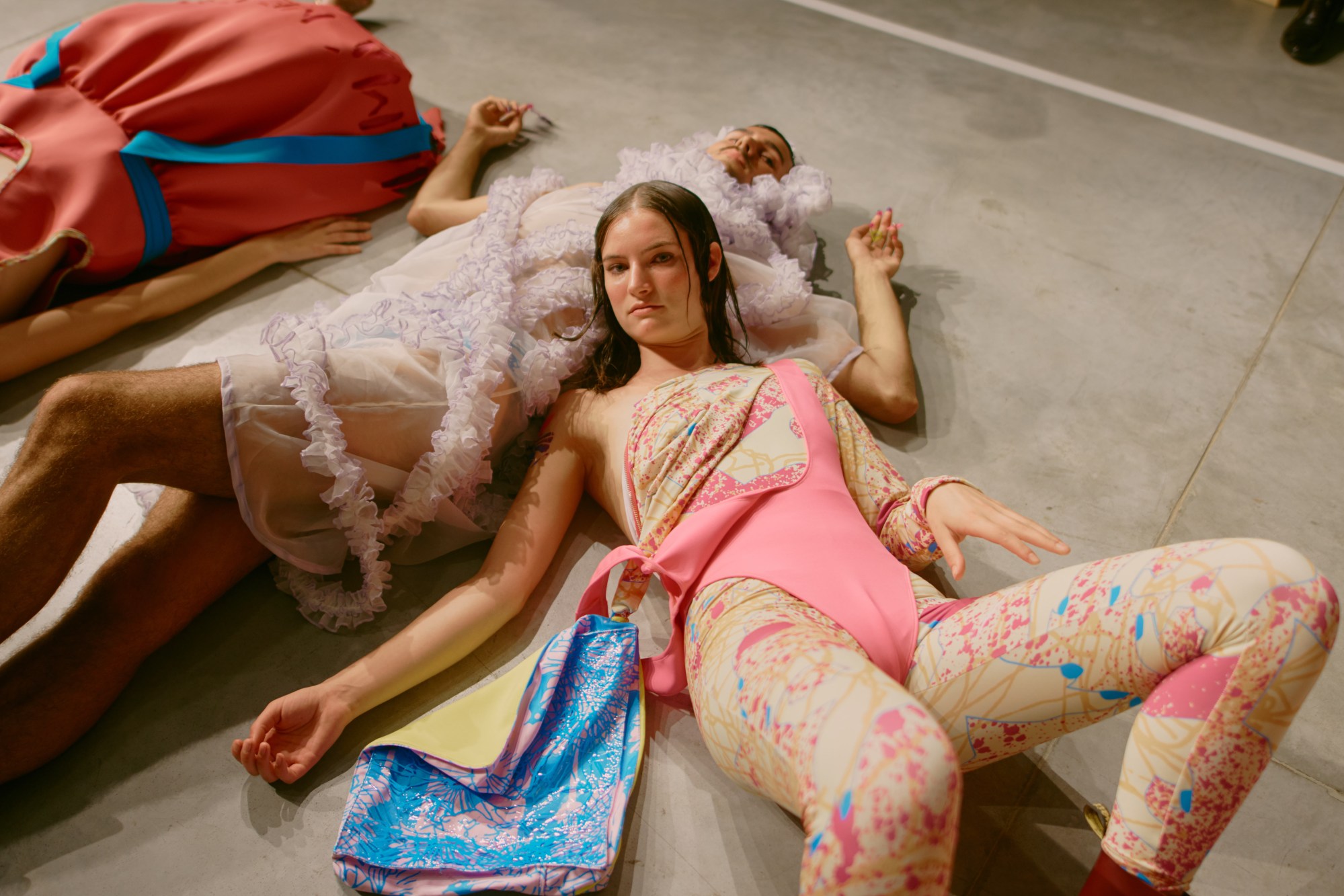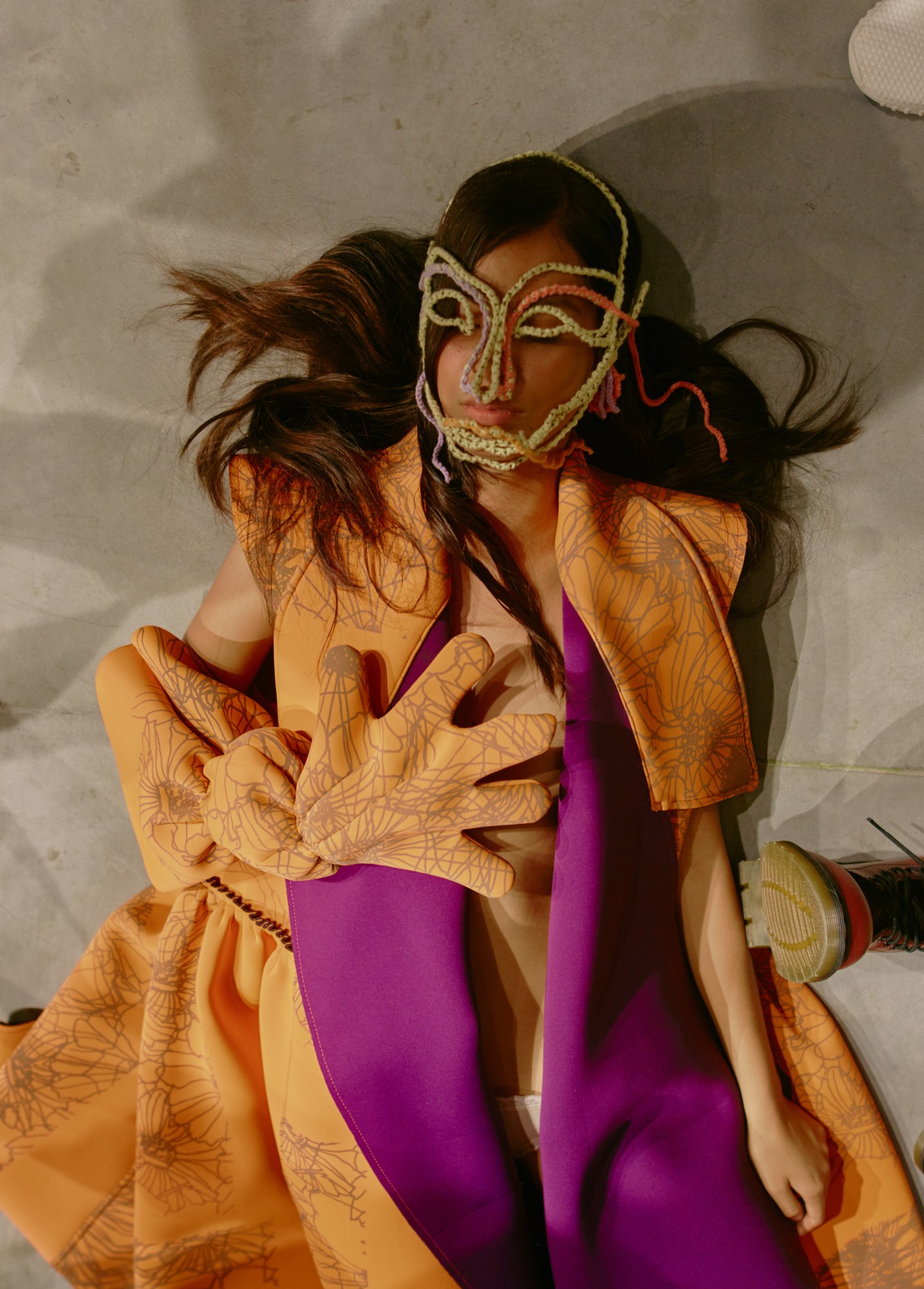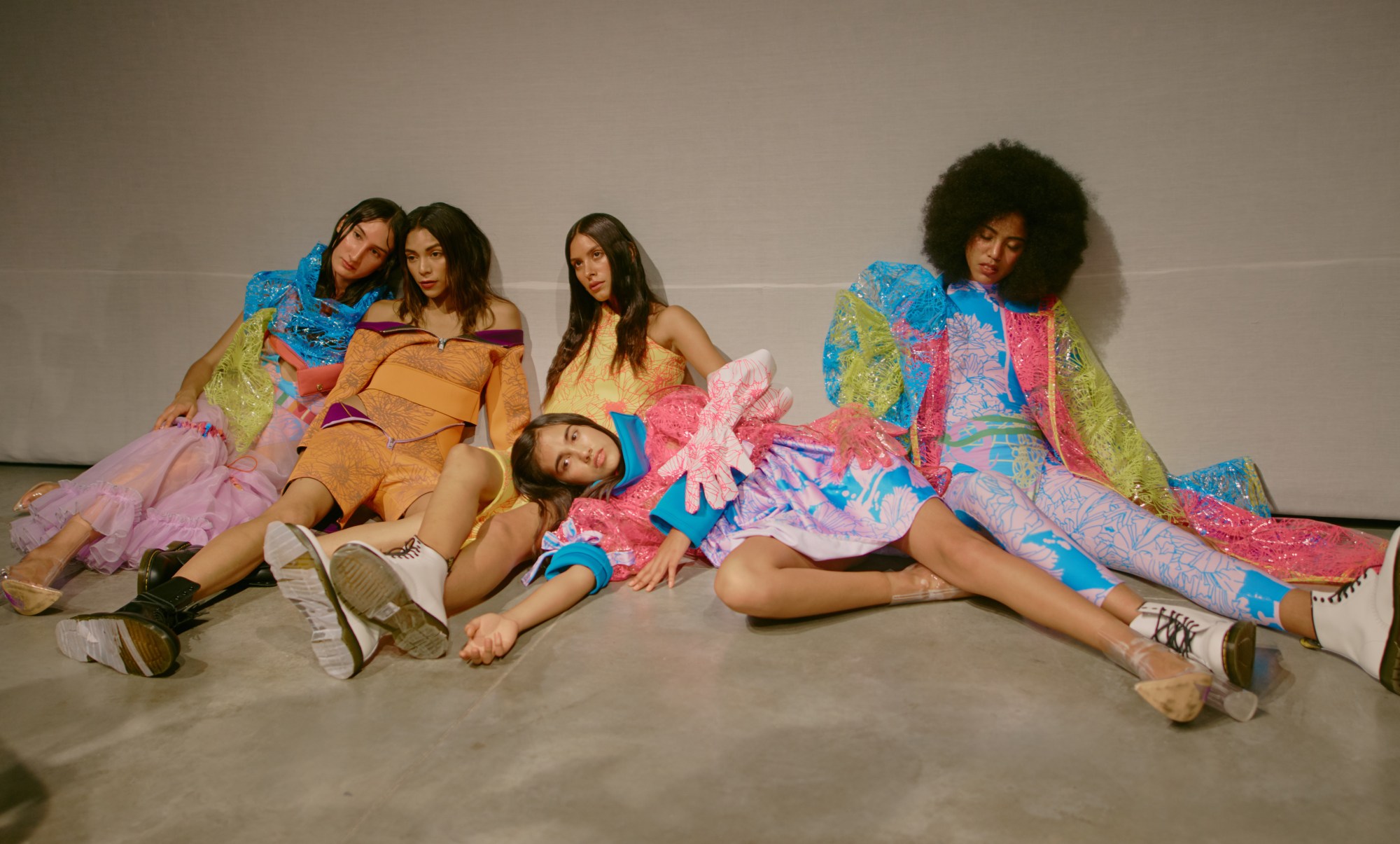Annaïss Yucra Mancilla’s runway shows don’t play into the ordinary catwalk experience. Instead of walking, models sprawl out over the floor, holding each other up while photographers and audience members circle them.
That’s because Mancilla is no “ordinary” designer. Dedicating her craft to raising awareness to the growing threat of femicide (the gender-related killing of women and girls) in Latin America, her clothes are a form of activism and her shows follow suit. She approaches her work with the intent to create maximum impact for the women’s rights movement in Peru.
“In Latin America, we come from a ‘man’s world,’” she explains. “These femicides are an everyday aspect of our society. And I really wanted to speak about it not only as a woman, but also as a human being.”
After studying fashion at the University at Trent University in England, the 27-year-old designer returned to Peru and launched her namesake brand to help bring change to her community. Her new collection “Resistencia,” meaning “endurance” in English, was shown last Thursday at Mercedes-Benz Fashion Week Russia. The performative show left Russia’s fashion world both confused and moved, completely unlike any other show in Russia this year.

Every aspect of the “Resistencia” collection is thoroughly researched and laced with symbolism. The bright color palette is a combination of the signature colors from the relevant women’s rights movements in Latin America, NiUnaMenos Peru, Marcha Por Aborto Chile, and NiUnaMenos Argentina and her long, draping, silhouettes draw influence from the era when women in Peru gained the right to vote. “The year was 1956, so I really wanted to take shapes from that period,” she says.
Flowers also play an important part in the symbolism of her collection. Using recycled plastic, she created “webbing” patterns of deconstructed flowers to pay tribute to the “Flowers for Eyvi” movement, where various artists organized at Guillermo Almenara Hospital with flowers after 22-year-old Eyvi Agreda was murdered by her stalker last year. They also represent stretch marks, burning, and bruises, Mancilla explains, which, she says, is why models at her Mercedes-Benz Fashion Week show had parts of their bare skin painted with them.

The show itself was also filled with meaning, from the opening graphics of “common places of sexual harassment” in Peru, to the soundtrack being the powerful recordings of women’s rights demonstrations.
Driven by the importance of her message, Mancilla applied to be one of the sponsored emerging international designers to showcase through Russia Fashion Week’s “Global Talents” program. She was the only Latin American designer to be selected and saw it as a great opportunity to speak to “another close-minded society.”
“I think it was very important for me to touch aspects in my culture that we don’t talk about normally,” she says. “It’s difficult to create something beautiful out of this message, but I wanted to create a dialogue and have press cover the topic in my country.”

She’s also wanted her work to be representative of violence in Peru’s transgender and non-binary communities, using transgender models to ensure the message doesn’t only include cisgender women in the conversation.
Every element of Mancilla’s design process feels deeply personal and considered, and she approaches a subject that can often be difficult to digest through fashion. But, perhaps, the most personal element of her “Resistencia” collection comes from the fact that she was creating the pieces while losing her mother.
She pays tribute to her Mom, who was clearly a huge source of inspiration for the designer, at multiple points in the collection. Her prints translate to “My mom taught me how to fight.” Judging from the powerful start to her early career, we can expect Mancilla to continue to fight for Peruvian women through her craft.

